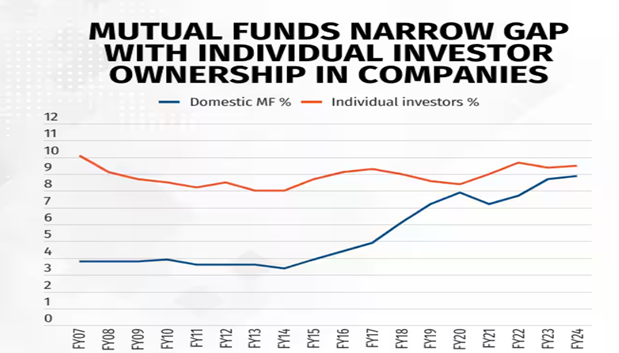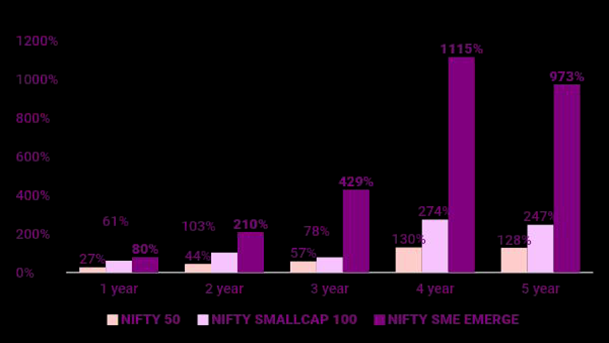Did you know HNIs have a combined net worth of 58% of India’s GDP? But where are they investing such massive amounts?
With a robust economy, the HNIs are also hailing the ride and have increased to 35.89 lakh today. This can be attributed to rising income, evolving financial markets, and technological advancements.
High-net-worth individuals invest two lakhs or more and have a minimum corpus of 5 crores. They are seen as more inclined to preserve their wealth and often invest with long-term goals. Today, HNIs and UHNIs invest in a blend of traditional and alternative investments.
Where should HNIs invest, and what are their preferences?
Investors encounter a variety of financial instruments when considering entry into the investment world. They have various alternative investment options, including debt, equity, and alternative investments. When discussing the potential for significant substantial returns, it’s important to note that traditional instruments such as fixed income, real estate, and fixed deposits typically yield a CAGR of less than 10% and thus are not considered attractive.
When investors allocate their capital to the market frequently, they find themselves at a crossroads. One path leads to direct investing, while the other involves seeking professional assistance.
Direct Equities
Individual investors often buy listed stocks themselves. This approach may not yield optimal returns due to a lack of knowledge, expertise, and discipline, but it has generated returns of up to 10% to 15% over the years. Many investors must stay updated on market movements, resulting in missed opportunities to generate alpha returns despite a steady increase in individuals.
Over the years, it pales compared to the rapid growth of indirect investing.

Investing through indirect channels, such as Portfolio Management Services (PMS) and mutual funds for buying publicly listed companies, is a more disciplined approach, as experienced fund professionals manage these investments.
High-net-worth individuals (HNIs) allocate approximately 47% of their portfolios to equity funds, predominantly via mutual funds and Portfolio management services (PMS). Notably, the highest Compound Annual Growth Rate (CAGR) for a mutual fund in India over the past ten years was an impressive 26.3% and has consistently achieved returns ranging from 10% to 18%.
In the first half of 2024, five PMS demonstrated an average return of 43.8%, with nearly all providing positive returns for HNIs. Consequently, investing in listed companies through these two instruments is a sound strategy.
Investment allocations by HNIs in these funds vary: ultra-conservative investors typically allocate 60-65% of their portfolios, while moderately conservative individuals invest around 45%.
Alternative investments
Alternative Investment Funds (AIFs)
AIFs have consistently outperformed various Nifty indices.
Venture Debt
India’s venture debt market surpassed the billion-dollar mark at $1.2 billion in 2023 and registered a compound annual growth rate (CAGR) of nearly 34% from 2017 to 2023, presenting a compelling option for investors seeking higher yields. Venture debt has become an increasingly versatile tool for financial management, strategic growth, and risk mitigation beyond traditional equity financing and has generated returns around between 18% to 24%.
Category II AIFs, which invest in a blend of equity, debt, and other securities, have emerged as an attractive investment avenue with 18–24% annual returns.
Hedge Funds
Hedge funds are typically viewed and considered high-risk investments that leverage complex strategies to generate returns and are often favored by institutional investors. Historically, these funds have struggled to generate significant alpha. For example, Aurum, a global hedge fund, reported a return of just 6.1% in the first half of 2024. Thus, these instruments are not considered attractive options for investors.
In August 2024, four out of six Category II debt funds delivered returns exceeding 10%, significantly outperforming the Nifty 50, which registered just 1.1% in the same month.
Venture Capital Funds
The strategies employed by AIFs, focusing on stock selection, sector allocation, and entry/exit timing, have proven beneficial for investors. CAT I AIFs investing in startups, early-stage, and social ventures have generated significant alpha. Under CAT—I Early-stage startups yield around 34%, and late-stage investments contribute between 20% – 30% returns.
However, the major challenge in this segment is liquidity, especially in India, where companies are not able to go public, and thus, VC funds are unable to take exits at favorable times. According to the EY Global IPO Trends Q2 2024 report, global IPO volumes fell by 12%, with proceeds down by 16% year-over-year (YOY).
SME
India is the largest SME market in the world. Small and medium businesses have contributed 36% of India’s total manufacturing output, which is 1/3rd of the country’s output going to SMEs. This sector is expected to contribute over 2 trillion dollars to the economy. An analysis of absolute returns over six years demonstrates that small and medium enterprises (SMEs) consistently outperform established benchmarks like Nifty50 and Nifty small Cap100. One Way to invest here privately is through pre-IPOs and startups.
Today, SMEs are generating an alpha of more than 40% and are an emerging set of companies that are becoming profitable, growing rapidly and generating highest alpha in the market today

As India races to $7 trillion by 2030, SMEs are primed to be game-changers, delivering exceptional performance and helping India become a thriving export hub.
Strategies to maximize HNI’s investment potential
- Asset allocation
HNIs holding significant capital for investments should carefully strategize and allocate funds across various asset classes. An effective investment strategy should prioritize diversification, which helps mitigate risk while aligning with the individual’s financial goals.
An HNI should allocate around 35-40% to small and mid-cap companies. Additionally, other asset classes—such as real estate, gold, exchange-traded funds (ETFs), and fixed-income securities should not be overlooked, as they can provide stability and further enhance portfolio diversification
- Spread investment across time.
Investments can be made by paying a lump sum at once or spreading the investment over time just like installments. While investing a lump sum preserves the time value of money, it’s also essential to consider investing when the time is right. There are better strategies than simply putting your money out without considering the timing. High-net-worth individuals (HNIs) are always advised to wait for the right time to deploy their cash.
- Look for Quality
Today, we often hear about various investment schemes, with many claiming to offer significant returns in the stock market. However, investors who ignore these claims and focus on conducting thorough research on different asset classes stand to gain the most. Whether investing in direct shares of listed or unlisted companies, mutual funds, real estate, AIFs, etc., HNI should prioritize quality companies and not follow others while making decisions.
- Tax benefits
An excellent way to strategize your portfolio is by investing tax-efficiently. HNIs demand customized tax planning and guidance from their wealth managers to tackle specific taxation, such as estate tax, capital gain, and gift tax.
- Look for good fund managers.Sometimes, all it takes to earn that alpha return is engaging with a good and experienced wealth manager. HNIs’ demand for personalized services makes it crucial to hire a manager. The wealth management segment will grow at around a 25-30% CAGR by 2027. The increase in the number of HNIs in India is contributing to this surge.A crucial strategy is hiring managers with a long track record, a good understanding of asset classes, and the ability to control HNIs and prevent them from making mistakes.


